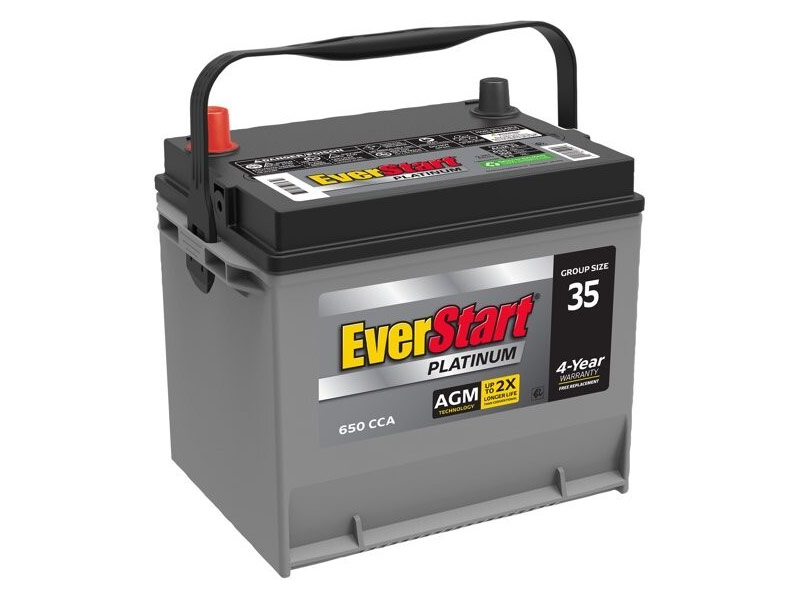
Your vehicle relies on various fluids to operate safely and efficiently. These fluids serve as lubricants, coolants, hydraulic mediums, and cleaning agents for different systems. Proper maintenance of fluid levels and quality is essential for vehicle longevity, performance, and safety. This comprehensive guide covers everything you need to know about monitoring and maintaining your vehicle’s vital fluids.
Why Fluid Maintenance Matters
Proper fluid maintenance:
- Prevents costly repairs by protecting expensive components
- Ensures optimal performance of all vehicle systems
- Extends vehicle life by reducing wear and tear
- Maintains safety by keeping critical systems operational
- Preserves warranties by following manufacturer recommendations
Engine Oil: The Lifeblood of Your Engine
Functions of Engine Oil
- Lubricates moving parts to reduce friction
- Removes heat from engine components
- Cleans and suspends contaminants
- Seals gaps between pistons and cylinders
- Prevents corrosion and rust
Checking Engine Oil
When to Check: With engine off and vehicle on level ground, wait 5-10 minutes after driving for oil to settle.
How to Check:
- Locate the dipstick (usually has a bright-colored handle)
- Pull out dipstick and clean with a rag
- Insert dipstick fully and remove again
- Read oil level between minimum and maximum marks
- Check oil color and consistency
Oil Level Guidelines
- Optimal level: Between minimum and maximum marks, closer to maximum
- Low oil: Below minimum mark requires immediate attention
- Overfilled: Above maximum mark can cause engine damage
Oil Quality Indicators
Good Oil: Clean, amber to black color, flows easily Bad Oil:
- Very thick or gummy consistency
- Metal particles visible
- Milky appearance (indicates coolant contamination)
- Strong burnt smell
Oil Change Intervals
- Conventional oil: Every 3,000-5,000 miles
- Synthetic blend: Every 5,000-7,500 miles
- Full synthetic: Every 7,500-10,000 miles
- Severe conditions: More frequent changes needed
Coolant: Temperature Control System
Functions of Coolant
- Prevents engine overheating
- Protects against freezing in winter
- Prevents corrosion in cooling system
- Lubricates water pump
Checking Coolant Level
Important: Never check coolant when engine is hot—serious burns can occur.
How to Check:
- Locate coolant reservoir (translucent plastic tank)
- Check level against minimum and maximum marks
- If reservoir is empty, check radiator level (when cool)
- Look for leaks around hoses and connections
Coolant Quality Signs
Good Coolant: Clear, bright color (green, orange, pink, or blue depending on type) Bad Coolant:
- Rusty or brown color
- Floating particles or debris
- Oily film on surface
- Sweet smell (indicates leak)
Coolant Service
- Check level: Monthly
- Flush and replace: Every 2-5 years or 30,000-100,000 miles (varies by type)
- 50/50 mixture: Proper antifreeze-to-water ratio
Types of Coolant
- IAT (Inorganic Acid Technology): Traditional green coolant
- OAT (Organic Acid Technology): Long-life, usually orange
- HOAT (Hybrid OAT): Combines benefits of both, various colors
Transmission Fluid: Smooth Shifting Essential
Functions of Transmission Fluid
- Lubricates transmission components
- Provides hydraulic pressure for shifting
- Cools transmission parts
- Cleans internal components
Checking Transmission Fluid
Automatic Transmission:
- Engine running, transmission warm, vehicle on level ground
- Shift through all gears, then park
- Locate transmission dipstick (often red handle)
- Check level and quality
Manual Transmission:
- Usually requires removing fill plug (professional service recommended)
- Some newer vehicles have dipsticks
Transmission Fluid Quality
Good Fluid: Red or pink color, sweet smell, flows easily Bad Fluid:
- Dark brown or black color
- Burnt smell
- Thick, gummy consistency
- Metal particles present
Service Intervals
- Automatic: Every 30,000-60,000 miles (varies by vehicle)
- Manual: Every 60,000-100,000 miles
- CVT: Follow manufacturer’s specific recommendations
Brake Fluid: Critical Safety Component
Functions of Brake Fluid
- Transfers force from brake pedal to brake components
- Operates hydraulic brake system
- Lubricates brake system components
- Resists corrosion in brake lines
Checking Brake Fluid
- Locate brake fluid reservoir (near firewall, driver’s side)
- Check level against minimum and maximum marks
- Inspect fluid color and clarity
- Look for leaks around reservoir and lines
Brake Fluid Quality
Good Fluid: Clear to light amber color Bad Fluid:
- Dark brown or black color
- Cloudy or contaminated appearance
- Moisture contamination (fluid absorbs water over time)
Service Requirements
- Check level: Monthly
- Replace fluid: Every 2-3 years or 30,000-45,000 miles
- Flush system: When contaminated or following schedule
Power Steering Fluid: Effortless Steering
Functions of Power Steering Fluid
- Provides hydraulic assistance for steering
- Lubricates power steering pump and components
- Transfers power from pump to steering gear
Checking Power Steering Fluid
- Engine off, vehicle on level ground
- Locate power steering reservoir (usually has steering wheel symbol)
- Check level against minimum and maximum marks
- Some vehicles require engine running for accurate reading
Power Steering Fluid Quality
Good Fluid: Clear to light amber, flows easily Bad Fluid:
- Dark, burnt appearance
- Foamy or bubbly consistency
- Strong odor
- Metal particles visible
Service Intervals
- Check level: Monthly
- Replace fluid: Every 50,000-75,000 miles or as needed
- Flush system: When contaminated or following severe service schedule
Windshield Washer Fluid: Clear Vision Essential
Functions of Washer Fluid
- Cleans windshield and other windows
- Removes dirt, bugs, and road grime
- Prevents freezing in cold weather
Checking and Maintaining
- Locate washer fluid reservoir (usually blue cap with windshield symbol)
- Check fluid level visually
- Refill with appropriate washer fluid
- Test spray pattern and nozzle operation
Types of Washer Fluid
- Summer formula: Basic cleaning
- Winter formula: Freeze protection
- Bug and tar remover: Heavy-duty cleaning
- All-season: Year-round protection
Differential Fluid: Smooth Power Transfer
Functions of Differential Fluid
- Lubricates differential gears
- Reduces friction and heat
- Protects against wear
- Enables smooth power transfer to wheels
Service Requirements
- Check level: During regular service intervals
- Replace fluid: Every 30,000-60,000 miles
- Professional service: Usually required due to access difficulty
Fluid Maintenance Schedule
Monthly Checks
- Engine oil level and quality
- Coolant level
- Brake fluid level
- Power steering fluid level
- Windshield washer fluid level
Seasonal Checks
- Coolant freeze protection level (before winter)
- Washer fluid type (winter vs. summer formula)
- All fluid levels before long trips
Professional Service Intervals
- Engine oil: 3,000-10,000 miles (depending on oil type)
- Coolant: 30,000-100,000 miles
- Transmission fluid: 30,000-60,000 miles
- Brake fluid: 30,000-45,000 miles
- Power steering fluid: 50,000-75,000 miles
Warning Signs of Fluid Problems
Engine Oil Issues
- Oil pressure warning light
- Engine knocking or ticking sounds
- Blue smoke from exhaust
- Oil spots under vehicle
Coolant Problems
- Temperature gauge running hot
- White smoke from exhaust
- Sweet smell in cabin
- Coolant puddles under vehicle
Transmission Fluid Issues
- Slipping or hard shifting
- Delayed engagement
- Whining or grinding noises
- Red fluid leaks under vehicle
Brake Fluid Problems
- Soft or spongy brake pedal
- Brake warning light
- Reduced braking performance
- Fluid leaks near wheels
Power Steering Issues
- Hard steering
- Steering pump whining
- Fluid leaks under vehicle
- Foamy reservoir fluid
Fluid Safety Considerations
Handling Precautions
- Wear safety glasses and gloves
- Work in well-ventilated areas
- Keep fluids away from heat sources
- Never mix different fluid types
Disposal
- Take used fluids to recycling centers
- Many auto parts stores accept used fluids
- Never pour fluids down drains or on ground
- Follow local environmental regulations
Storage
- Store fluids in original containers
- Keep containers sealed and upright
- Store in cool, dry locations
- Keep away from children and pets
Cost-Saving Tips
Preventive Maintenance
- Check fluid levels regularly to catch problems early
- Follow manufacturer’s service intervals
- Address small leaks before they become major problems
- Use quality fluids to extend service life
Smart Shopping
- Buy fluids in bulk when possible
- Look for sales and rebates
- Consider synthetic fluids for longer service intervals
- Compare prices at different retailers
Conclusion
Maintaining proper fluid levels and quality is one of the most important aspects of vehicle maintenance. Regular monitoring and timely service of your vehicle’s fluids will help ensure reliable operation, prevent costly repairs, and extend your vehicle’s life.
Remember that fluid maintenance is not just about levels—quality is equally important. Clean, properly functioning fluids protect your vehicle’s systems and maintain optimal performance. When in doubt about fluid condition or service requirements, consult your owner’s manual or a qualified technician.
Key Takeaway: Fluids are the lifeblood of your vehicle’s systems. Regular attention to fluid levels and quality is an investment in your vehicle’s longevity, performance, and your safety on the road.

